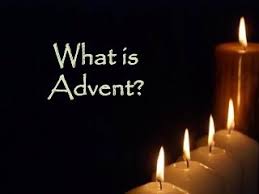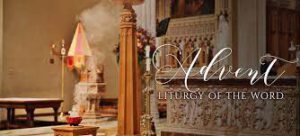What makes Christmas the most awaited Christian celebration of the year? In our materialistic age, it is made attractive by the gaiety that surrounds it. But, deep down, to a heart and mind attuned to spiritual truths, Christmas brings hope, for it not only marks Christ’s birth on earth but also teaches us to await His Second Coming.
Christmas is not limited to a day. The Catholic Church celebrates it from 25th December until the Solemnity of the Epiphany, which commemorates the manifestation of the Infant Jesus as the Saviour of the World.
And just how important is the preceding four-week liturgical season called Advent? If Christmas be the beginning of a spiritual journey, Advent is that much-needed preparation for its realisation. “Advent is thus a period for devout and joyful expectation.”[1]

PERIOD
“Advent begins with Evening Prayer I of the Sunday falling on or closest to 30 November and ends before evening prayer I of Christmas.”[2] The Sunday on or closest to 30 November can range between 27 November and 3 December, depending on the year. This means that Advent begins on the evening of a Saturday falling between 26 November and 2 December (inclusive), and it ends on the evening of 24 December, which holds Evening Prayer I of Christmas (25 December).
THEMES
These are indicated by a colour code, candles on a wreath and the Liturgy (including the Word).
Colour:
Although the liturgical colour for Advent is violet or purple, like that of Lent, it is not a penitential season.[3]
Wreath:
“The Advent wreath, with the progressive lighting of its four candles, Sunday after Sunday, until the Solemnity of Christmas, is a recollection of the various stages of salvation history prior to Christ’s coming and a symbol of the prophetic light gradually illuminating the long night prior to the rising of the Sun of justice.”[4]
Candles:
Three of the four candles are purple and used on the first, second and fourth Sundays, to signify hope, faith, and prayer and expectation, respectively. On the third Sunday of Advent, also called Gaudete[5](‘Rejoice’, in Latin, referring to expressed or exuberant joy) Sunday, a pink or rose candle is lit in addition to the two purple ones of the earlier Sundays, signifying joy. On Christmas Eve a white one is added: the ‘Christ candle’, signifying the purity of Our Lord.

Readings:
In all three liturgical cycles, the First Reading, mainly from Isaiah, includes prophecies regarding the Messiah and the messianic times.
The Second Reading, almost always from St Paul, comprises exhortations and orientations that help us be in readiness and full of hope.
The Gospel on the First Sunday refers to the Second Coming of Our Lord at the end of times; on the second and third Sundays, the focus is on the mission of St John the Baptist as the precursor of the proclaimed Saviour and preacher of a personal readiness to receive salvation; and on the fourth Sunday, also called Laetere (‘Rejoice’, in Latin, referring to the internal joy of anticipation) Sunday, the Gospel refers to the events fostering a proximate preparation for the Birth of the Saviour, with the Mother of Jesus figuring prominently therein.
The weekdays are divided into two periods: one up to 16 December, wherein the First Reading is from Isaiah and the Gospel on the life and work of St John the Baptist; the second, from 17 December to 24 December, serving to prepare more closely for the Lord’s Birth, has prophecies regarding the Messiah, from different books, for the First Reading, whereas the Gospel relates events that prepare the Nativity.[6]
Finally, the floral decoration and the music of Advent is marked by moderation while the Gloria is neither sung nor recited.
Liturgy:
Advent Sundays (like those of Lent and Easter) take precedence over all solemnities and feasts of the Lord. Solemnities occurring on these Sundays are observed on the Saturdays preceding. No funeral Masses are celebrated either.
In the liturgy of Advent, two great figures are presented as guiding lights: John the Baptist, the precursor of Jesus, whose preaching is an invitation to conversion as an indispensable condition for salvation; and the Virgin Mary, who gave herself entirely to His holy will and waited in hope and joy for His coming into the world.
The entire liturgical season is so crucial to preparation that it is especially recommended that there be homilies even on the weekdays of Advent.
CONCLUSION
All in all, here is God’s beauty and majesty flowing through Scripture and ritual. Not only is the first Sunday one of hope, the whole of the season of Advent is so. This is a hope beyond all hopes, an eminent preparation for the Feast of Christmas. As the saying in Portuguese goes: “O melhor da festa é esperar por ela.” – The best part of the feast lies in waiting for it!
[1] https://www.archbalt.org/wp-content/uploads/2017/04/GeneralNormsLiturgicalYear.pdf No. 39
[2] Ibid.
[3] According to the Code of Canon Law: “The penitential days and times in the universal Church are every Friday of the whole year and the season of Lent.” (No. 1250)
[4] Directory on Popular Piety and the Liturgy Principles and Guidelines, No. 98
[5] The first word of the Introit of the Mass that Sunday.
[6] Cf. ‘Synopsis of the Lectionary’, in Lectionary (Catholic Press, Ranchi, 2011), p. x.
Advent beautifully explained. All thanks to writers like you Oscar
Well written Sir. Thanks.
Holy advent, very well explained. You are well versed with scriptures and a gifted writer. Thanks Oscar for enlightening us on scriptures from time to time. God bless you abundantly.
You have explained Advent very well (as always!) Thanks Oscar and God Bless you & your family!